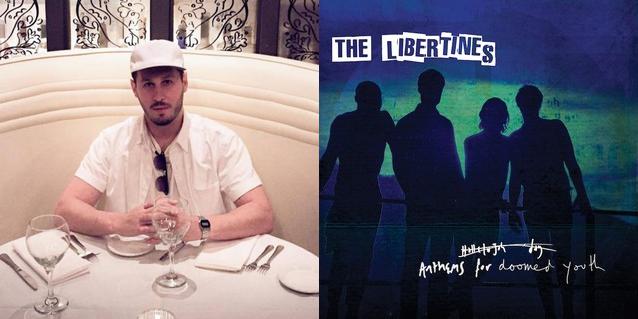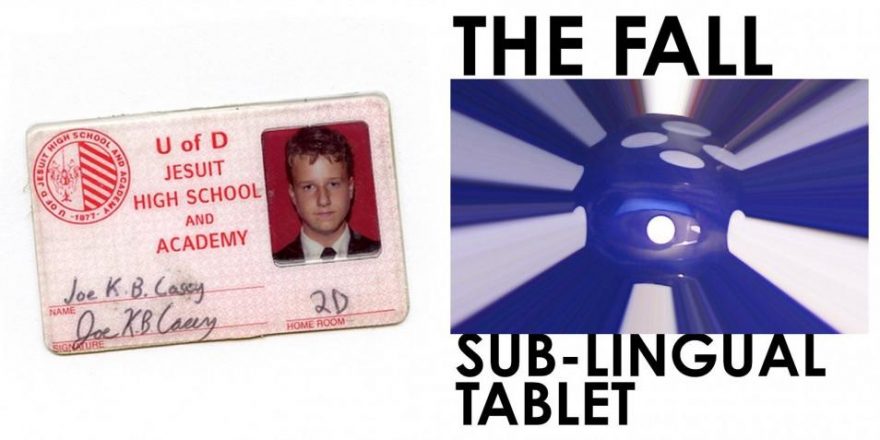There were only three bands in the ’80s that mattered: one was the Fall, whom I saw on the Hex Enduction Hour tour in 1982. Mark Smith stalking the stage, lyric-book in hand, utterly shamanic. A Salford Jim Morrison with tatty hair, Oxfam jacket and co-op jeans. Life-changing. The second was the Birthday Party, whom I saw when I was an awestruck fifteen-year-old. “Hands up, who wants to die?” screamed Nick Cave, three foot from my face as cowboy bass player Tracy Pew relieved himself onstage. Mind-blowing. The third band of the ’80s was the Go-Betweens, from Brisbane, Australia. It’s no understatement to say that the Go-Betweens completely changed my attitude toward rock & roll.
Formed in the late ’70s by Robert Forster and Grant McClennan, the Go-Betweens were beyond righteous. They were Holy. Pure rock & roll and totally un-rock & roll at the same time. Robert and Grant wrote separately. They even looked like their songs; Robert was tall, wiry and handsome, like a slightly bemused ’40s Hollywood idol, and Grant was shorter, with pale, intense eyes. Grant was the author of earnest love songs and the “poppier” side of the group; Robert wrote otherworldly, chill, wry vignettes. Robert also had the best hair in rock & roll. This is important. Look at him staring down the camera in early promo shots — in front of the legend “The Pied Piper Follows Us” — his hair like a genetic experiment to blend the best parts of Peter Tork’s bob and Roger McGuinn’s fringe. If Forster had been in the Byrds (go with me on this) he wouldn’t have lasted long – Crosby’s ego couldn’t have stood someone with such great hair.
I was lucky enough to support the Go-Betweens in the mid-’80s (between their Liberty Belle and the Black Diamond Express and Tallulah LPs). My enduring memory of that evening is Robert Forster taking to the small stage of Wolverhampton Poly, tweed cape draped over his shoulders by a roadie as he then walked into the crowd, sans guitar, intoning the words of the brand-new spaghetti western classic and perhaps quintessential Forster song “The Clarke Sisters”: “The middle sister gets her period blood/the flood of love, the flood of love/The Clarke sisters…and their steel-grey hair, their lovely steel-grey hair…” Forster had, around this time, taken to writing a column for Debris magazine, giving out hair-care tips. Sample quotations: “Hair gets bored with only one shampoo” and “The Robert Redford look is one of my favourite hairstyles…. I suspect after washing his hair, he just combs it back and lets it fall naturally. Redford does not use a hair dryer.” Robert had himself undertaken a dramatic and no doubt traumatic eight-hour hair-dye job himself, in honour of Dynasty‘s silver-haired star John Forsythe. The results were excellent, although Robert looked more like Iggy on the cover of Raw Power than the soap actor.
Worn out and fallen out, the Go-Betweens split in 1990 after six majestic albums. Robert and Grant recorded a clutch of fab solo albums throughout the ’90s. Robert’s hair remained great, shifting styles subtly between albums. By the early 2000s, Robert and Grant had gotten back together as the Go-Betweens and seemed to be inching, then leaping, toward the greater success that had eluded them in the ’80s. But then Grant McLennan died suddenly of a heart attack in his sleep in 2006.
Shift to the present and behold Robert Forster’s new album Songs to Play, his first in seven years. Normally, I’d come down heavily on this foppish work rate; if you’re in rock & roll, you should be writing a goddamn song a day — right? Partly. Only Robert Forster could make such sloth-like progress work to his advantage, admitting in a recent interview that if he writes three songs a year, he’s “on fire.” And it’s all paid off. On the instant-classic, road-running opener “Learn to Burn,” Forster sounds possessed — possessed once again by the holy spirit of rock & roll, crooning the winning line “I mistook Memphis for a house in Surrey/You can miss detail when you’re in a hurry.” As one who hails from the aforementioned English (God’s own) county, let me tell you, it’s an easy mistake to make. By the second song, “Let Me Imagine You,” it’s becoming clear that we’re getting into something on par with Forster’s own previous best, his 1990 solo debut Danger in the Past. The sonic experimentation of 1996’s Warm Nights is present but refined; just listen to “Learn to Burn” on headphones and you’ll hear some of the best rhythm guitar playing ever committed to tape. These things matter. Real rock & rollers know this. Lou Reed knew this. Robert Forster knows this.
There are great high-wire moments on Songs to Play. The opening of “A Poet Walks,” where Robert begins playing a riff that anyone else might have rejected as being “not much cop,” slowly develops into an intense mariachi epic, and I find myself thinking, “Whoah, that takes real chutz.” It’s worth pointing out that although Robert Forster must have been playing the guitar for four decades, he still grapples with the strings like an eighteen-year-old who’s been playing for six months. This is a very good thing.
The real joy of this album, though, is the newness of it all. Robert sounds so agog with the possibilities that life has to offer that it’s as if he’s just discovered the sheer genius of the greatest art form of the modern age — that’s rock & roll — for the first time. No more so than on the excellent “I Love Myself.” Is it an anthem against the self-doubting middle-aged, middle-class, hand-wringing male, or is it a wry statement of self-assurance? Whatever, I am totally down with this statement, as I also love myself.
There are, of course, great lyrics right across this album. But I don’t care to examine good lines. A great lyric is self-contained and needs no analysis. It’s only a duff lyric that requires the full glare from the merciless searchlight of the Bad Song Police. The Bad Song Police will find no business here.
Like the best rock music, Songs to Play creates its own world — it’s Bobby’s world, a world of haunted houses, songwriters on the run, sonic rhythm guitar and violins – “When Bobby sings/I hear violins.” (I made that one up.) So wake up and smell the coffee, babe, take in the sunlight, put on Songs to Play and surrender to genius. This album is definitely good for your life. It’s Robert Forster’s best by several shakes — and that’s no mean feat. Oh, and if you’re wondering, Robert still has excellent hair.







